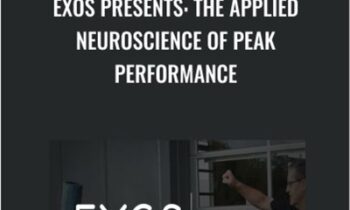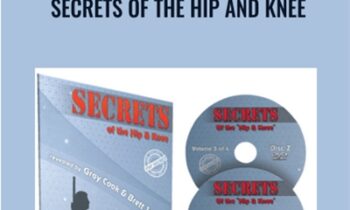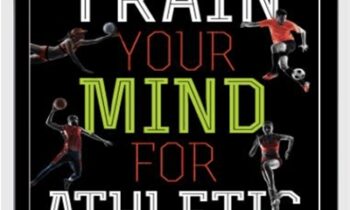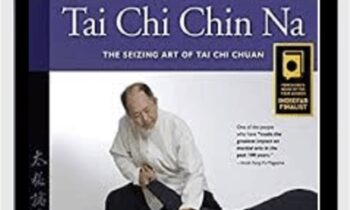$15.00 Original price was: $15.00.$5.00Current price is: $5.00.
[Instant Download] – Immediately deliver the download link after receiving the payment
 Purchase this course you will earn 5 Points worth of $0.50
Purchase this course you will earn 5 Points worth of $0.50Elevate your skills with the [Audio] IC19 Short Course 21 – An Ericksonian Look at the Fifth Vital Sign – Virgil Hayes, Doctor of Osteopathy course, available for just $15.00 Original price was: $15.00.$5.00Current price is: $5.00. on Utralist.com! Browse our curated selection of over 60,000 downloadable digital courses across diverse Health and Medical. Benefit from expert-led, self-paced instruction and save over 80%. Start learning smarter today!
[Instant Download] – Immediately deliver the download link after receiving the payment
Purchase [Audio] IC19 Short Course 21 – An Ericksonian Look at the Fifth Vital Sign – Virgil Hayes, Doctor of Osteopathy courses at here with PRICE $15 $5
- Topic Areas:
- Short Course
- Bundles:
- IC19 – All Audio
- Category:
- Erickson Congress | Erickson Congress 2019
- Faculty:
- Virgil Hayes, DO
- Duration:
- 1 Hour 27 Minutes
- Format:
- Audio Only
- Original Program Date :
- Dec 12, 2019
Description
Description:
Chronic pain is frequently encountered by healthcare professionals. The current treatment is primarily pharmaceutical intervention with Opioids or NSAIDS that create new problems and address a limited part of the pain. Pain, whether physical or mental/emotional, tends to be experienced as one. Anticipated pain and memories of past painful incidents also contribute to the experience of pain.
This presentation examines chronic pain over a broader cognitive, emotional, and behavior context. It goes beyond matching opiates to pain receptors, by including pain’s emotional and cognitive roots. Physical pain is exacerbated by emotional pain; and emotional pain is exacerbated by physical pain. Pain is generally addressed as a physical issue, and not as a emotional or cognitive issue. The narcotics have no impact on relieving emotional, or mental pain, but are the current ‘go to’ method of treatment.
This presentation presents a paradigm that chronic pain is not limited to a physical or somatic dysfunction, but has cognitive and emotional roots as well. This conceptualization empowers the healthcare provider, and individuals to look at the plethora of generally unacknowledged sources contributing to their experience of pain; and opens up other co-creative interventions.
To understand the difficulties of chronic pain its good to understand there are three faces of pain. One face is the pain in the present. Another face is memories of pain experienced in the past. The third face is the anticipation (fantasized) of pain in the future. Thoughts and emotions can become a neurological loop (habit) that feeds upon itself unless the supporting patterns are interrupted.
The presentation uses case studies and lecture to assist the clinician in seeing, and understanding the creation of chronic pain in order to effectively teach the patient to manage it.
Educational Objectives:
- List two emotional or cognitive components of pain.
- List two therapeutic hooks to help gain rapport, and direct the intervention.
- List two words or phrases that connect physical pains to emotions and thoughts.
*Sessions may be edited for content and to preserve confidentiality*
Faculty

Virgil Hayes, DO Related seminars and products: 7
Virgil Hayes is focused on teaching individuals how to tap into their innate healing mechanisms. The Mind-Body-Spirit can be utilized by simple techniques that only take a few minutes to receive benefits. Creating, whether it be a published fiction or non-fiction book, or teaching an individual or group how to access their inner wisdom is my passion.
Purchase [Audio] IC19 Short Course 21 – An Ericksonian Look at the Fifth Vital Sign – Virgil Hayes, Doctor of Osteopathy courses at here with PRICE $15 $5
Cultivate continuous growth with the [Audio] IC19 Short Course 21 – An Ericksonian Look at the Fifth Vital Sign – Virgil Hayes, Doctor of Osteopathy course at Utralist.com! Unlock lifetime access to premium digital content, meticulously designed for both career advancement and personal enrichment.
- Lifetime Access: Enjoy limitless access to your purchased courses.
- Exceptional Value: Benefit from savings up to 80% on high-quality courses.
- Secure Transactions: Your payments are always safe and protected.
- Practical Application: Gain real-world skills applicable to your goals.
- Instant Accessibility: Begin your learning journey immediately after buying.
- Device Compatible: Access your courses seamlessly on any device.
Transform your potential with Utralist.com!
Related products
Health and Medical
= 43 Points
Health and Medical
= 28 Points
Health and Medical
= 43 Points
Health and Medical
Train Your Mind for Athletic Success – Mental Preparation to Achieve Your Sports Goals – Jim Taylor
= 18 Points
Health and Medical
= 74 Points
Health and Medical
= 33 Points
Health and Medical
The Heart of Complex Cardiac Care: Strategies for Rapid Action – Marcia Gamaly, Robin Gilbert
= 85 Points
Health and Medical
EXOS Presents: Advanced Strength and Power Featuring Dan Baker
= 53 Points

![[Audio] BT18 Topical Interaction 15 - Working with Beliefs in Brief Therapy - Robert Dilts](https://utralist.com/wp-content/uploads/2023/04/Audio-Only-BT18-Topical-Interaction-15-Working-with-Beliefs-in-Brief-Therapy-Robert-Dilts-100x100.png)
![[Audio] BT10 Short Course 41 - Creating Solutions by Turning on "The Light": Exploring the Power of Playfully Illuminating "Trance-actions" - Betty Blue](https://utralist.com/wp-content/uploads/2023/04/Audio-Only-BT10-Short-Course-41-Creating-Solutions-by-Turning-on-The-LightExploring-the-Power-of-Playfully-Illuminating-Trance-actions-Betty-Blue-PhD-100x100.png)
![[Audio] IC19 Short Course 21 - An Ericksonian Look at the Fifth Vital Sign - Virgil Hayes](https://utralist.com/wp-content/uploads/2023/04/Audio-Only-IC19-Short-Course-21-An-Ericksonian-Look-at-the-Fifth-Vital-Sign-Virgil-Hayes-Doctor-of-Osteopathy.png)







![[Audio] IC19 Short Course 21 - An Ericksonian Look at the Fifth Vital Sign - Virgil Hayes](https://utralist.com/wp-content/uploads/2023/04/Audio-Only-IC19-Short-Course-21-An-Ericksonian-Look-at-the-Fifth-Vital-Sign-Virgil-Hayes-Doctor-of-Osteopathy-100x100.png)